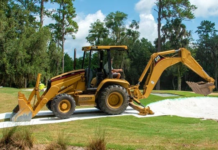Introduction
If you’re anything like me, your garden is probably full of concrete footpaths and paths. They’re great because they help keep muddy shoes and paws out of the house, but they can also be a bit messy if they crack. If you want to fix up your cracked concrete footpaths, here’s what you need to know:
Clean out the crack with a wire brush, allowing the crack to be totally clean.
- Clean out the crack with a wire brush, allowing the crack to be totally clean. Don’t use a wire brush on the concrete surface or any of its edges or sides.
Rinse it out using a hose or a bucket of water.
Rinse it out using a hose or bucket of water. After you have applied the patch, you will need to remove any excess concrete that may have seeped into the cracks between the stones. To do this you can use an old wire brush and give it a good scrubbing with some warm water from your garden hose or a bucket. You should also rinse out all of the leftover sand as well as any dust or debris that might be around on top of the repaired area
Get the right equipment
To get started, you’ll need to gather a few tools: a wire brush, a bucket of water, and a hose. You may also want to have at hand some concrete caulk or sealant in case any smaller cracks need fixing. The wire brush is for cleaning out the crack and removing any loose debris. The bucket of water is for rinsing out the crack so that it’s clean when you start filling it with new concrete. Just make sure your towel is dry!
The next step is to apply some patching material (in this case it’s concrete) inside the hole until it’s full and then use a trowel to smooth over all sides of the patching material so they’re level with each other look at hire construction equipment.
Retaining wall
A retaining wall is a structure that holds back earth, rocks, and other materials. It can be used to create a level surface for building houses or other structures in hilly areas.
It is usually made of concrete or brick like this retaining wall post, with a sturdy foundation. The wall has to be able to hold back the pressure of the material behind it without collapsing or moving outwards.
Fix any path holes
A path hole is a hole in the ground that has been dug by an animal. It is typically used for shelter and protection to fix it looking at a machine that fills potholes.
- Fill any holes with concrete filler.
- Use a trowel to smooth it out.
- Let it dry before walking on it.
Dry the area using a towel or let it air dry.
After the concrete has been cleaned, it’s time to let it dry. You can do this by simply waiting for 24 hours or so, but if you’re in a hurry or want to speed up the drying process, try using a towel to gently rub away any excess moisture from the surface of the concrete. You can also use an electric fan on low speed to help speed up evaporation and help dry out your concrete footpaths faster. Once you’ve finished cleaning and drying your walkway, be sure not to walk on them until they are completely dry!
Fill the crack using either concrete caulk for hairline cracks or concrete sealer for larger cracks.
Fill any cracks using either concrete caulk for hairline cracks or concrete sealer for larger cracks.
Use a caulking gun to fill the crack, being careful to apply an even layer of caulk along the length of it so that it is as smooth as possible. Let it dry completely before walking on it again. If there’s any excess around your repaired area, clean this off with a wet cloth before letting it dry completely again.
Repairing concrete footpaths can be easy and fun, but make sure you follow these steps!
Repairing concrete footpaths is a great way to increase the longevity of your walkway. It can also be a fun and relaxing project, so don’t worry if you’re not sure what you’re doing. However, there are some things that you should keep in mind when fixing concrete footpaths:
- Don’t forget to clean out any cracks first! If there are holes or cracks in your path, then they will easily get worse if left untreated. So before laying down new concrete, make sure that any cracks have been filled with grout or cement paste (depending on how big the crack is). Also, remember that it’s best if these repairs happen before any more rain falls because once water gets into those little crevices it could cause further damage later on down the line–so make sure everything is dry before proceeding further with this project!
Conclusion
So there you have it! These are our tips on how to repair concrete footpaths in your garden. We hope this article has been helpful for you, and that you’ll be able to put it into practice at home. If you have any additional questions or comments, feel free to leave them below!











